Do you wonder how to talk to kids about food?
The language you use around your child will influence the way they feel about food, themself, and how they respond to you. Kids are sponges and the way you talk about food and bodies will become their inner voice.
This includes the way you categorize food, respond to their food requests and reactions, and talk about yourself related to food. All of these have the potential to foster a neutral and healthy relationship with food or to create more harm.
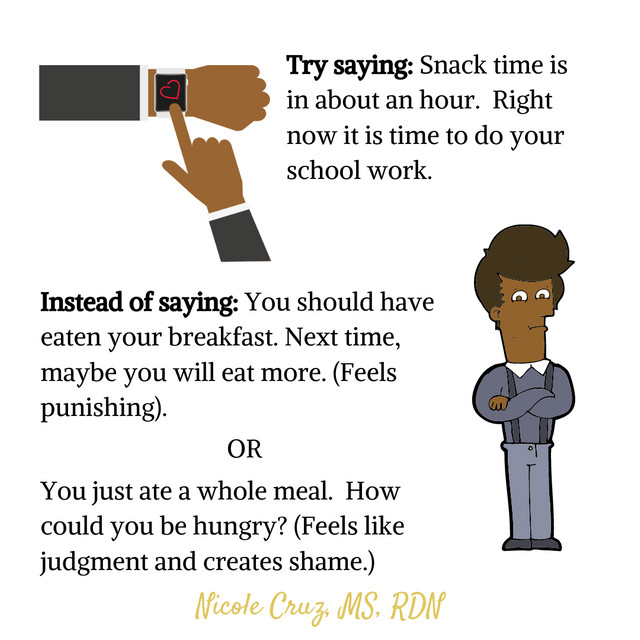
The 3 Aspects of How to Talk to Kids About Food
Labeling Food:
Labeling food tends to either elevate or demonize individual foods. Categorizing food by food group (dairy, fruit, grain) is concrete and appropriate. Labeling food with judgment, or how it affects the body, is abstract and might create harm.
Labels that demonize food: bad, unhealthy, junk
Labels that elevate food: treat, goodie, fun, special
Instead of categorizing foods with labels that create a judgment, try calling food what it is: candy, cookie, apple, chips, cereal, granola bar.
This keeps food neutral. For more on food neutrality, read How to Create Food Neutrality for Your Child.
Responding to Their Comments and Requests:
To help keep food on a level playing field, it’s important for our responses to remain unemotional and non-judgmental.
They say the food is gross
If your child responds that food looks gross, disgusting, or they’re not eating it, respond with, “You don’t have to eat it.” And mean it! Let them know they don’t have to eat anything they don’t want to eat. This diffuses situations and makes eating their choice instead of something you’re forcing. When you require bites or allow your emotions into the conversation, it creates fuel for the fire. How many times have you heard someone say they hate ‘broccoli’ because they were forced to eat it as a kid?
They ask for food you’re not offering
Try using this 3-step formula.
- Offer a ‘conditional yes’– try to say yes whenever possible. It diffuses situations and helps kids feel heard, hear you, and get on your team. The ‘conditional yes’ involves using yes even when you’re saying no. You’re going to say yes to ‘something’.
- Yes, you can have chocolate with dinner.
- Yes, I hear you really want those gummy bears.
- Yes, cookies are super yummy!
- Set a boundary – Let them know what is available or what they can do, but it’s not the cookie or candy.
- Right now it’s not mealtime, it’s playtime.
- We have apples and peanut butter available for a snack right now.
- Let them know when it is available – Try to be specific about when you will offer the food they want. If you can’t, that’s ok. But try to tell them when or what you’re going to do to make it available. The goal is for them to know it’s not off-limits. It’s not a bad food or something they’re not allowed to have.
- Let’s plan to have candy with dinner.
- Let’s put cookies on the menu for tomorrow.
- Let’s add chips to our shopping list for next week.
Complete scripts for how to talk to kids about food:
- Yes, you can have candy tonight with dinner. Right now we have cheese, crackers, and cucumbers for snack. You can pick a piece of candy and I’ll keep it safe until dinner.
- Yes, I know you love ice cream! I do too! Right now it’s homework time, not snack time. Let’s find a time to put ice cream on the menu.
- Yes, chips are yummy. Right now we have sandwiches, carrots, and pretzels available. We’re out of chips, so let’s put them on the grocery list for next time.
Talking About Yourself:
Your language becomes their inner voice. Kids are like little sponges. They constantly pick up what you say, even when you think they’re not listening. They absorb everything, including the way you talk about food and your body:
- I can’t stop eating this.
- I’m being so bad.
- I really need to lose weight.
- I’ll never lose weight if I keep eating like this.
- I can’t have cookies around or I’ll eat them all.
There was a client I worked with who shared a story with me.
She always told me she couldn’t have chips around because she would eat them all. She believed that was part of her and something she couldn’t change. As we explored that story more, she shared a memory:
I remember sitting with my dad and we had chips. And my dad said, “You know the difference between us and the Smith’s? They can sit in front of a bowl of chips and not eat them. But us, Johnson’s, we can’t have chips around or we eat them all.” Ive never been able to be around chips without eating them all. I feel pulled to them, like I can’t stop.
We all have blind spots about the way we speak. It’s normal to react. However, the more aware you become, the more ability you have to change.
Practice your responses. Read the lines above and practice your 3-prong answers.
Also, grab my Free Guide: Sugar Scenarios. It will tell you what to say and what to do in specific situations.


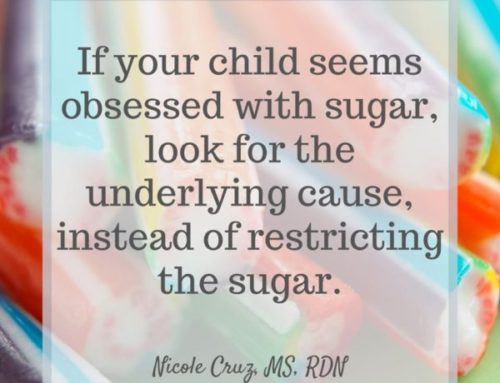
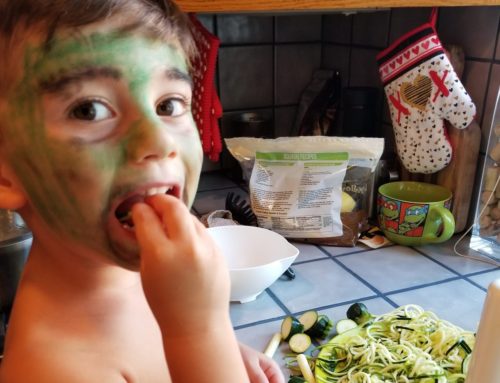
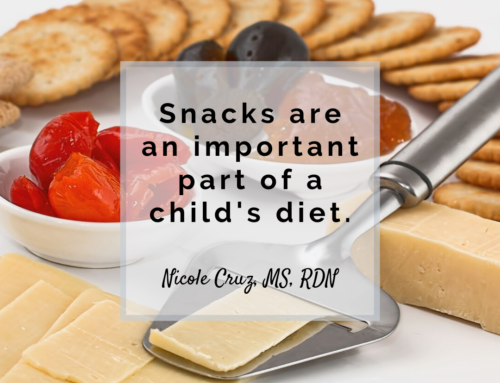
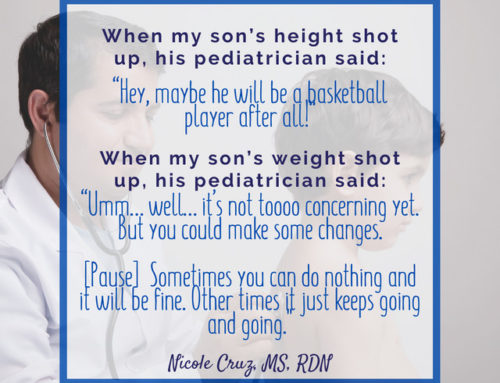
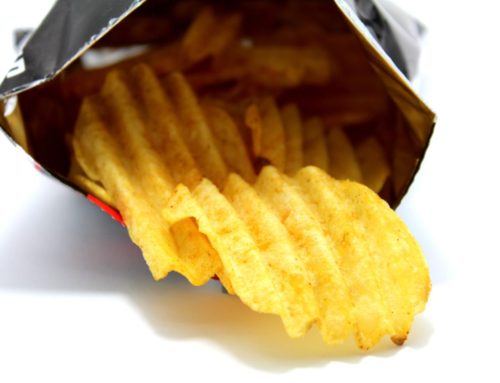

Leave A Comment